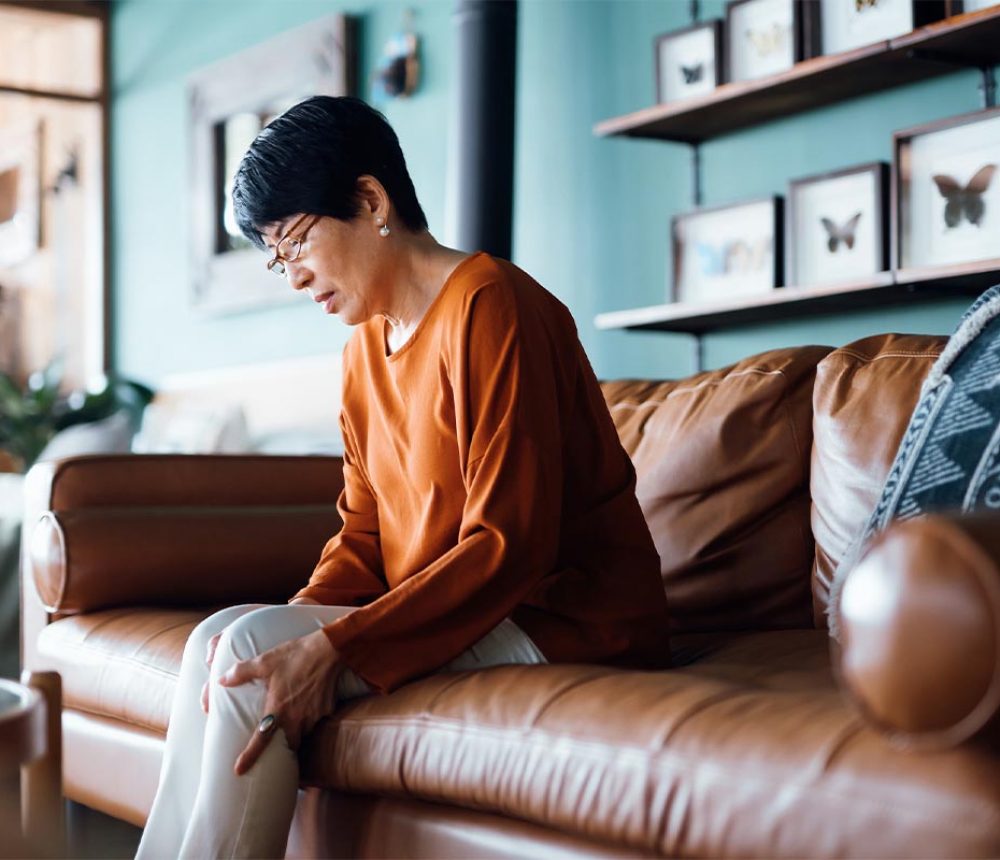
Arthritis causes pain and inflammation in a joint. It’s a common condition, which more than 10 million people, of all ages, suffer with across the UK. There are many types of arthritis, however the 2 most common are; Osteoarthritis and Rheumatoid arthritis.
Osteoarthritis effects nearly 9 million people across the UK, making it the most common type of arthritis. Most common in woman over 40, or with people with a history of the condition, osteoarthritis initially affects the smooth cartilage lining of the joint. This leads to pain and stiffness due to the joint being unable to move as easy. The thinning of the smooth cartilage makes the ligaments and tendons work harder, this can cause swelling.
Where is osteoarthritis most common?
• Spine
• Knees
• Hips
• Hands
The least common of the two, rheumatoid arthritis effects approximately 400,000 people. Like osteoarthritis, women are more likely to be affected than men. However, unlike osteoarthritis, rheumatoid arthritis is an autoimmune disease, meaning the immune system malfunctions and attacks the body instead of the ‘intruders’. Traditionally, it effects the outer cover of the joint first. This can then spread across the joint, leading to swelling and change the shape of the joint.
According to Summit Orthopedics, research has suggested that women are more susceptible to arthritis than men for a number of reasons:
• Genetics
Researchers have found specific genetic links among women for hand and knee osteoarthritis.
• Hormones
Research suggests that female hormones have an effect on the cushioning cartilage that it’s between the bones of the joints to allow smooth movement.
• Joint Stability
Women’s joints are more lax than men’s. The bones move around more and are unfortunately less stable within the joint. This means they are more prone to injury, and arthritis can be an outcome of injury.
The Most Common Symptoms
Due to the various types of arthritis, the symptoms can vary from type-to-type. However, there are various common symptoms, and if you are experiencing any of these regularly, you should get them checked out by your GP to ensure of an accurate diagnosis.
• Joint pain, tenderness and stiffness
• Inflammation around the joints
• Restricted movement
• Weakness
Unfortunately, there is no cure for arthritis, but there are various treatments than can help it from developing at a faster rate, and to aid the pain.
The main treatments for Osteoarthrosis are:
• Lifestyle Changes – maintaining a healthy weight, with a balanced diet and regular exercise
• Medication – to relieve pain. (This could be synthetic drugs or plant therapies)
• Supportive therapies – (TENS, hot or cold packs, massage)
The treatments for this type of arthritis can help alleviate pain, reduce inflammation, decrease disability and enable you to be as active as possible. Besides from lifestyle changes and supportive treatments, you can also have surgeries to help, for example, joint replacement or synovectomy (the destruction of the membrane that lines a joint).
The main treatments for Rheumatoid Arthritis are:
• Disease-modifying anti-rheumatic drugs (DMARDs)
When your diagnosed with this type of arthritis, you’re more than usually offered this drug. This eases symptoms and slows progression.
• JAK inhibitors
A newer type of medicine, for people who are unable to take DMARDs.
• Steroids
Besides from drugs and various medications, therapies such as acupuncture, physiotherapy, osteopathy and massages can help alleviate the pain you may feel. These are all good options for short-term benefits.
https://www.summitortho.com/2015/03/23/ask-dr-rodriguez-arthritis-common-women/
Disclaimer: Our products are not intended to prevent, treat or cure any disease or serious illness. If you have any health concerns please contact your doctor or pharmacist.
© 2022 TRELONK